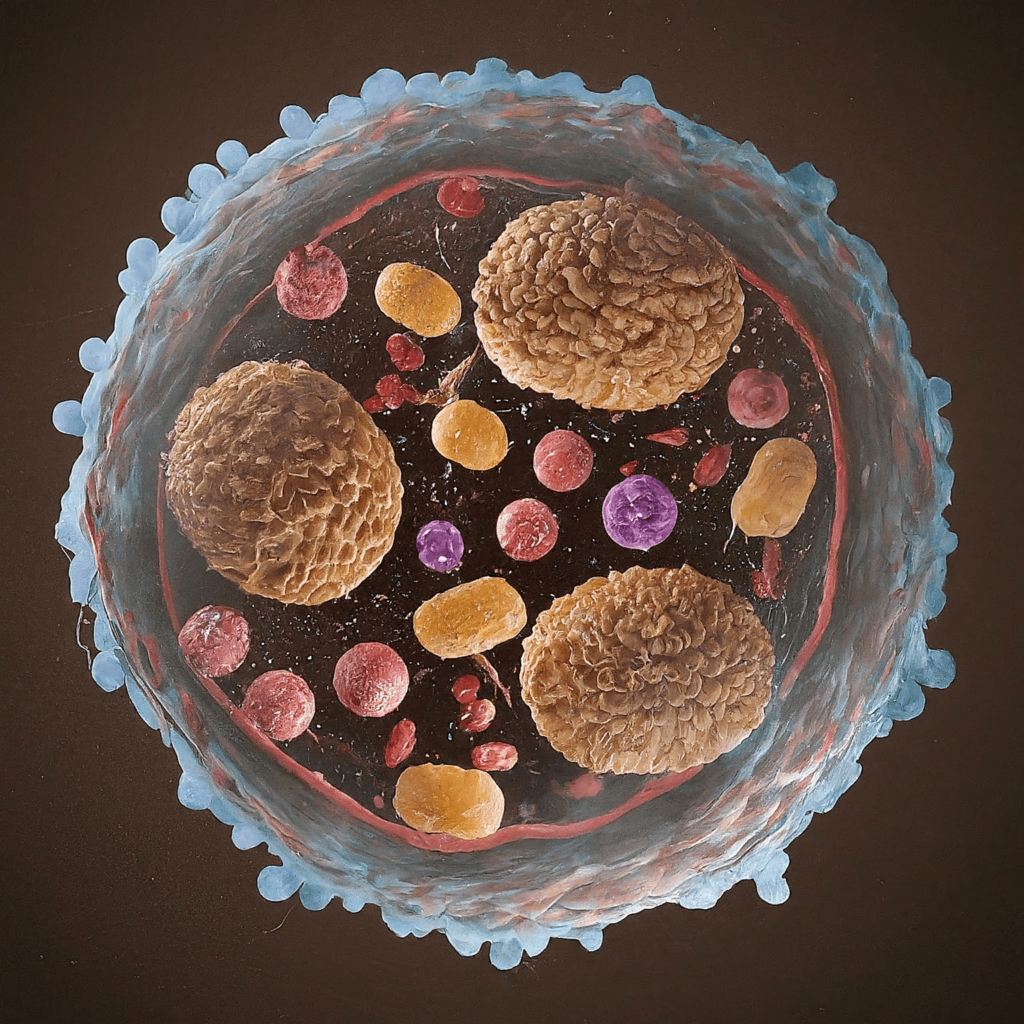Introduction
Lysosomes, often termed as the “suicidal bags” of a cell, play a crucial role in cellular digestion and waste management. But why are they given this rather ominous title? This blog delves into the fascinating world of lysosomes to uncover their function, structure, and the reason behind their nickname. Understanding their role is key to grasping how cells maintain their health and balance through a process of controlled self-destruction.
Table of Contents
What Are Lysosomes?
Lysosomes are membrane-bound organelles found predominantly in animal cells. They contain powerful hydrolytic enzymes responsible for breaking down various biomolecules, including proteins, lipids, nucleic acids, and carbohydrates. Acting as the cell’s waste disposal system, lysosomes digest unwanted materials, either from outside the cell (via endocytosis) or within (through autophagy).
Key Features of Lysosomes:
- Enzyme-Rich: Contain around 50 different digestive enzymes.
- Acidic Environment: Their internal pH is highly acidic (around 4.5-5.0), which is necessary for enzyme activity.
- Membrane-Bound: The lysosomal membrane protects the rest of the cell from the digestive enzymes inside.


Why Are Lysosomes Called Suicidal Bags?
The term “suicidal bags” comes from the unique ability of lysosomes to destroy the cell they belong to, under specific circumstances. This happens when the lysosomal membrane ruptures, releasing the potent enzymes into the cytoplasm. Here’s why they’re called suicidal bags:
1. Autolysis: Self-Destruction of Cells
When a cell becomes damaged or infected beyond repair, lysosomes can initiate autolysis, a self-destructive process that leads to the breakdown and eventual death of the cell. The lysosomal enzymes digest the cell’s components, ensuring that the damage does not spread to neighboring cells. This controlled destruction is vital for overall tissue health and regeneration.
2. Programmed Cell Death (Apoptosis)
In certain situations, lysosomes play a part in apoptosis, or programmed cell death. This is a natural process where cells that are no longer needed, or are malfunctioning, are systematically destroyed to prevent harm. Lysosomes release enzymes that degrade the cell’s internal structures, allowing the cell to dismantle itself in a controlled manner.
3. Defense Against Pathogens
Lysosomes also protect cells by digesting invading pathogens like bacteria and viruses. When a pathogen enters the cell, lysosomes fuse with it and release their digestive enzymes to break it down. This, however, can sometimes cause collateral damage to the host cell, leading to its death—a process that contributes to the “suicidal bag” title.
The Role of Lysosomes in Cellular Homeostasis
Lysosomes are not just destructive powerhouses; they are essential for maintaining cellular homeostasis. By digesting excess or damaged organelles (through autophagy), cellular debris, and foreign substances, lysosomes help the cell to:
- Renew its components: The breakdown products from lysosomes can be reused by the cell to synthesize new molecules.
- Prevent buildup of waste: Without lysosomes, harmful substances would accumulate in the cell, leading to dysfunction or disease.
- Regulate metabolism: Lysosomes help manage the balance of nutrients and energy within the cell by recycling degraded components.
What Happens When Lysosomes Malfunction?
Malfunctioning lysosomes can lead to severe health conditions, collectively known as lysosomal storage diseases. These are genetic disorders where a specific enzyme is either absent or dysfunctional, causing the buildup of undigested materials within the lysosomes. This can result in cellular damage and the manifestation of various diseases, such as Tay-Sachs disease or Gaucher disease.
Conclusion
Lysosomes, known as the “suicidal bags” of the cell, play a dual role in destruction and preservation. They break down cellular waste, prevent the accumulation of harmful materials, and in extreme cases, even destroy their own cell to protect surrounding tissues. This seemingly paradoxical function is essential for the health, growth, and survival of organisms. By understanding lysosomes, we gain insight into the intricate balance cells maintain to ensure their survival and proper functioning.
FAQ
-
What are lysosomes made of?
Lysosomes are made of a lipid bilayer membrane that encases various hydrolytic enzymes.
-
What is the primary function of lysosomes?
Their main function is to digest and break down cellular waste and foreign particles.
-
Why are lysosomes compared to suicidal bags?
Lysosomes can cause the death of their own cell by releasing digestive enzymes when the cell is damaged or infected beyond repair.
-
What are lysosomal storage diseases?
These are genetic disorders that result from dysfunctional lysosomal enzymes, leading to the accumulation of waste materials in the cell.
- Why are living organisms classified? : Biological Classification
- Wildlife Conservation Efforts in India
- Best Time to Visit Kaziranga National Park: Complete Guide
- How to Tell Wild Animals Questions and Answers: A Detailed Guide
- How to Tell Wild Animals Summary: A Fun and Engaging Overview






